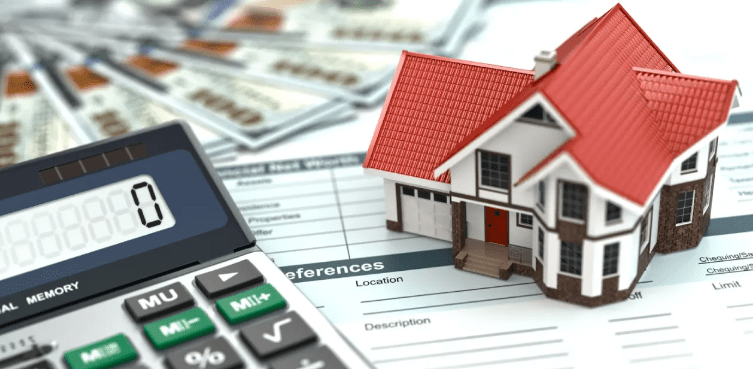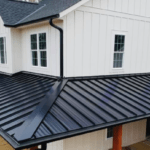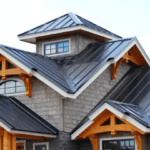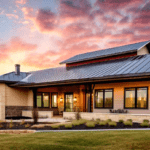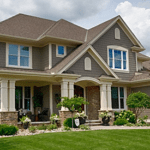- By Bella Blog
- Roofing, Roofing Technology
- 0 Comment
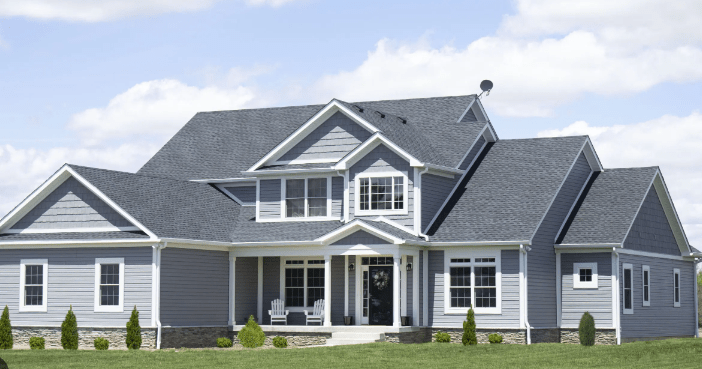
Discover the financial benefits of investing in a roof replacement and how it can increase the value of your property.
Understanding the Importance of a Quality Roof
Investing in a quality roof replacement can have long-term benefits for homeowners. A well-maintained roof not only protects the structure of the property but also adds value to it. Understanding the importance of a quality roof is essential for homeowners looking to make a wise investment.
First and foremost, a quality roof provides protection against the elements. It acts as a shield, keeping out rain, snow, and wind, ensuring the interior of the property remains dry and safe. A roof with leaks or damages can lead to costly repairs and even compromise the structural integrity of the property.
Additionally, a quality roof can enhance the curb appeal of a property. A well-designed and properly installed roof can significantly improve the overall appearance of a home. This can attract potential buyers and increase the value of the property in the long run.
Moreover, a quality roof can contribute to energy efficiency. Proper insulation and ventilation can help regulate the temperature inside the property, reducing the reliance on heating and cooling systems. This can lead to lower energy bills and increased savings for homeowners.
In summary, investing in a quality roof replacement is not just about immediate benefits, but also about the long-term value it brings to a property. Homeowners should prioritize the maintenance and replacement of their roofs to ensure the protection and value of their homes.
Calculating the Return on Investment (ROI)
Calculating the return on investment (ROI) of a roof replacement can help homeowners determine the financial benefits of such an investment. ROI is a measure of the profitability of an investment and is typically expressed as a percentage.
To calculate the ROI of a roof replacement, homeowners need to consider the upfront cost of the replacement, including materials and labor. They should also take into account any potential savings in energy costs and maintenance expenses that may result from the new roof.
For example, if a roof replacement costs $10,000 and the homeowner expects to save $1,000 per year in energy costs and $500 per year in maintenance expenses, the total annual savings would be $1,500. If the homeowner plans to stay in the property for 10 years, the total savings over that period would be $15,000.
To calculate the ROI, divide the total savings by the upfront cost of the roof replacement and multiply by 100. In this example, the ROI would be ($15,000 / $10,000) * 100 = 150%. This means that the homeowner would recoup their investment in the roof replacement and make a 50% profit over the 10-year period.
It’s important to note that ROI calculations may vary depending on factors such as the location of the property, the quality of the materials used, and the current market conditions. Consulting with a roofing professional or financial advisor can help homeowners make accurate ROI calculations.
Factors Influencing ROI for Roof Replacement
Several factors can influence the ROI of a roof replacement. Understanding these factors can help homeowners make informed decisions about their investments.
Firstly, the quality of the materials used for the roof replacement can significantly impact the ROI. Investing in high-quality, durable materials can increase the lifespan of the roof and reduce the need for frequent repairs or replacements. This can result in higher savings and a higher ROI over time.
Secondly, the expertise and experience of the roofing contractor can impact the ROI. Hiring a reputable and skilled contractor can ensure the roof replacement is done correctly, minimizing the risk of future issues. This can contribute to the longevity and performance of the roof, ultimately increasing the ROI.
Additionally, the location of the property can influence the ROI. In areas with extreme weather conditions, such as hurricanes or heavy snowfall, investing in a quality roof that can withstand these conditions can provide greater peace of mind and potentially higher returns.
Other factors that can influence the ROI include the size of the property, the current market conditions, and any applicable tax incentives or rebates for energy-efficient roof replacements. Considering these factors can help homeowners maximize their ROI and make informed decisions about their roof replacement investments.
Comparing Different Roofing Materials for ROI
Choosing the right roofing material is crucial when considering the ROI of a roof replacement. Different materials have varying lifespans, costs, and energy efficiency properties, which can impact the long-term financial benefits.
One commonly used roofing material is asphalt shingles. They are affordable, easy to install, and have a lifespan of about 20-30 years. However, they may require more frequent repairs and replacements compared to other materials, which can affect the ROI in the long run.
Metal roofing is another popular option. While it has a higher upfront cost, it offers exceptional durability and can last 50 years or more. Metal roofs are also energy-efficient, reducing heating and cooling costs over time. This can result in significant savings and a higher ROI.
For homeowners looking for eco-friendly options, solar roofing can be a great choice. Solar panels integrated into the roof can generate electricity and potentially reduce energy bills. While the upfront cost may be higher, the long-term savings from reduced energy costs can contribute to a positive ROI.
Other materials to consider include clay tiles, slate, and wood shakes. Each material has its own advantages and drawbacks in terms of cost, lifespan, and energy efficiency. Homeowners should carefully compare these materials and consider their individual needs and budget when calculating the ROI.
Maximizing Your Investment with Proper Maintenance
Investing in a quality roof replacement is only the first step towards maximizing your investment. Proper maintenance is essential to ensure the longevity and performance of the roof, ultimately increasing its ROI.
Regular inspections and maintenance can help identify and address any minor issues before they turn into major problems. Clearing debris, checking for leaks, and ensuring proper ventilation are some of the maintenance tasks that should be performed regularly.
It’s also important to keep the roof clean and free from any moss, algae, or debris that can damage the materials. Trim overhanging branches and remove any potential sources of damage, such as ice dams or clogged gutters.
Additionally, homeowners should consider scheduling professional roof inspections every few years. These inspections can identify any hidden issues and ensure that the roof is still in good condition. Addressing any necessary repairs promptly can prevent further damage and preserve the ROI of the roof replacement.
By investing in proper maintenance, homeowners can protect their investment and maximize the financial benefits of their roof replacement. Regular upkeep can extend the lifespan of the roof, reduce the need for costly repairs, and ultimately increase the ROI.

Call Bella Construction Today! 724-515-5163
www.mybellaroof.com
Bella Blog
Welcome to Bella Construction & Developement Inc., where excellence meets affordability in the realm of construction services.
